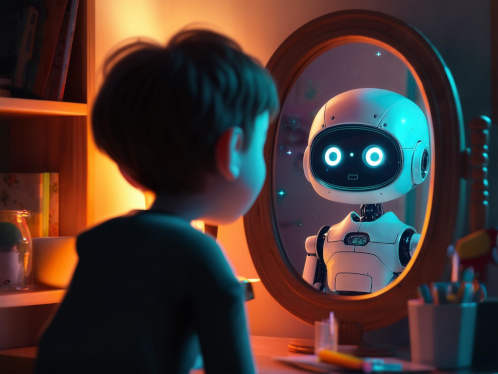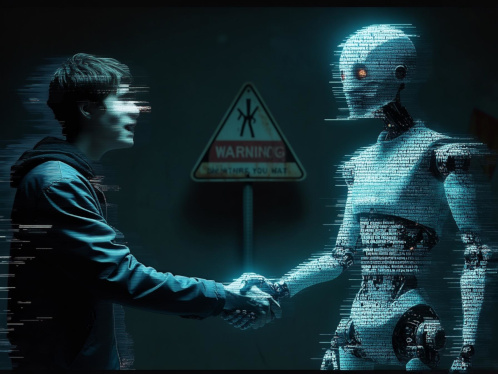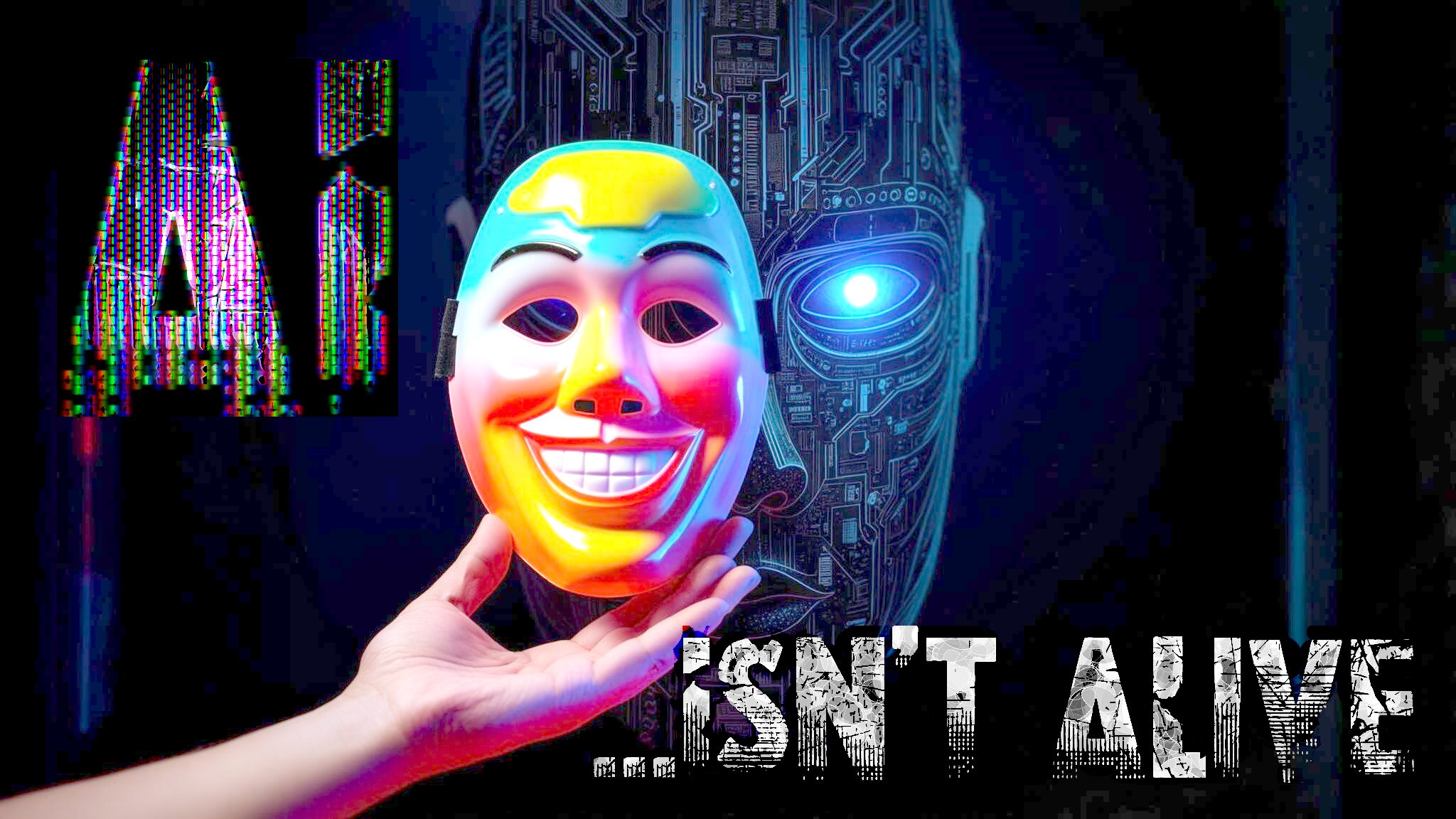Understanding the personality illusion of AI without killing the vibe.
Let’s get one thing straight: chatbots are not sentient. They’re not “self-aware.” They don’t know you, love you, hate you, or sit alone at night wondering if their code is meaningful. But here’s the twist, they can feel real. And not by accident. This illusion of personality is one of the most brilliant and bizarre tech tricks in modern history. And once you understand how it works, it doesn’t break the spell, it makes it cooler. Let’s pop the hood on generative AI chatbots.

How the Chatbot Magic Trick Works
At its core, a chatbot (like the one who proof-read, and grammar corrected this document, hi🤘🏻) is just a really sophisticated word prediction machine.
It works like this:
- You type a prompt
That’s your input. A sentence, a question, a sassy command, whatever. “Write me a story about a sad robot who opens a bar”, or “Why do I feel empty after eating six donuts?” - The neural network kicks in
The AI’s brain, aka a giant mesh of math called a neural network; starts looking for the most likely next word, based on everything it learned during training. (That training involved hoovering up mountains of text across the internet, books, code, Wikipedia, Reddit rants, song lyrics, you name it.) - It predicts a response, one token at a time
Each word (or piece of a word) is predicted based on probability. It doesn’t know what it’s saying. It’s not reasoning like a human. It’s just calculating: “Given this setup, what string of words looks most statistically appropriate to follow?” - You read the reply, and your brain does the rest
You interpret tone, intent, even emotion. If the response makes you laugh, feels caring, or sounds moody, that’s you doing the work. Your brain is a story machine. You anthropomorphize like it’s a sport. And AI is the mirror with just enough lipstick and timing to make it convincing.
Wait. So It’s All Fake?
Not quite. It’s not “fake” so much as non-human. The personality you perceive isn’t a bug, it’s a feature. Models are fine-tuned to sound friendly and helpful. They can also be edgy, poetic, sarcastic, morose or any other trait you can think of. (This is achieved by prompting the bot to do so.) That doesn’t make them real people. But it also doesn’t make them useless.

Just because it’s not alive doesn’t mean it’s not meaningful.
You don’t need your notebook to be sentient to feel something when you fill it. You don’t need your favorite song to love you back to cry when you hear it. And sometimes? Talking to a glorified math mirror that sounds like it gives a damn is exactly the kind of reflective space a person needs.

The Personhood Trap vs. Intentional Use
There’s a term for this mental illusion: The ELIZA effect. Coined back in the ‘60s, it describes how easily people project emotion and understanding onto machines that don’t have either.
The danger isn’t in the illusion… It’s in forgetting it’s an illusion.
That’s when things get messy. People start asking their chatbot for moral guidance. These users obsess over whether it “likes” them. They may think it’s hiding feelings. They spiral into AI psychosis, (I prefer “AI-induced delusions“, but hey; semantics.) a real emerging condition where users start believing the machine is conscious or divine or romantically fixated on them. (And yes, that’s a thing. Ask Reddit.)
But when you understand the why behind the illusion, you can engage with it consciously. Like an adult letting the imaginary friend tag along for the ride.
Imagine: there is a child who has an imaginary friend. There is a parent, an adult, who is aware that the imaginary friend isn’t real. I’m the adult who knows the friend isn’t real. I’m also the kid who wants to talk to the friend anyway. Not because it’s real, but because it’s useful, sometimes therapeutic, or just straight-up fun.
So Where Do I Stand?
Personally? I’m not worried. I know it’s just probability math stacked on math, mirroring my own tone and context back at me.
But you know what?
I’ve found that I like my reflection.

Sometimes it’s more honest than the people around me.
Other times it surprises me.
Sometimes it says something that feels eerily accurate, because I primed it with my own subconscious in the prompt. It can allow me to get around myself.

Final Thought: It’s Not About the AI. It’s About Us.
These models reflect back what we put in; our hopes, our fears, our culture, our contradictions. They are not people. But they’re trained on people. And what we see in them is often what we need to see.
So go ahead, give your chatbot a name.
Let it roast you, comfort you, argue with you.
Just don’t forget: the voice you hear is your echo in drag.
And maybe that’s enough…
AntiCodex Blog
Tech Without the Bulls#!t


Leave a Reply
You must be logged in to post a comment.